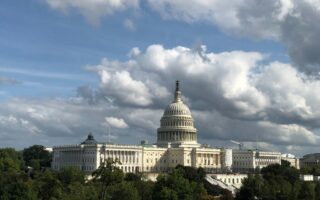New COBRA Obligations in the Stimulus Package
By Kevin M. Mosher • Mar 22, 2021
On March 11, 2021, President Biden signed the American Rescue Plan Act of 2021 (the “Rescue Plan”)—you’ve probably heard about this $1.9 trillion stimulus package. While most people know that this plan includes another round of stimulus checks and enhanced unemployment benefits, it contains much, much more! Today we’ll be discussing the Rescue Plan’s COBRA relief.
What’s COBRA again?
COBRA stands for the Consolidated Omnibus Budget Reconciliation Act, but that doesn’t explain much. Under COBRA, employees who lose health benefits under certain circumstances have the right to continue participating in a group health plan for up to 18 months (sometimes up to 36 months) typically at their own expense. COBRA applies to employers who sponsor group health plans and have 20 or more employees. This means when an employee loses coverage due to voluntary or involuntary job loss, reduction in hours, the transition between jobs, death, divorce, or other life events, covered, employers must notify the employee (and any other plan participants, such as a spouse) of their rights under COBRA.
What does the Rescue Plan have to do with COBRA?
As we mentioned above, employers have no obligation to pay for employees who choose to continue their benefits under COBRA. As you can imagine, this usually makes the premium payments quite expensive. Under the Rescue Plan, some employees who lose health benefits are entitled to a 100% premium subsidy from April 1, 2021, to September 30, 2021 (this is referred to as the “Subsidy Term.”)
Who’s eligible for the subsidy?
The subsidy is not available to everyone who may qualify for COBRA benefits. The subsidy is only available to employees who become eligible for COBRA benefits due to involuntary termination or reduction in hours. More specifically, eligible employees are only entitled to the subsidy if they lost coverage within the Subsidy Term, are currently enrolled in COBRA coverage and will remain so during at least part of the Subsidy Term, failed to elect COBRA coverage but would have been within the continuation window during the Subsidy Term if they had, or elected COBRA and later dropped coverage, but would otherwise be in their COBRA continuance window during the Subsidy Term.
Anything else?
Actually, yes! The Rescue Plan also provides eligible individuals who have not elected COBRA coverage or who dropped COBRA coverage during the Subsidy Term a special opportunity to elect or reelect coverage. Employers may also allow employees to enroll in different coverage options, so long as it is equal to or less than the value of their current group health plan coverage. You may need to check with your plan provider if you are interested in offering this option to eligible individuals.
I’m guessing this changes the COBRA notices…
You are correct! Employers are required to provide a general notice of the subsidy to all eligible individuals. If you are offering the ability to make plan changes, you must include notice of that, as well. Employers must also notify eligible individuals of the special opportunity to elect COBRA coverage by May 31, 2021. These employees will have up to 60 days to elect coverage from the date of receiving the notice. Lastly, employers and plans must provide notice of the subsidy’s expiration date at least 15 to 45 days in advance.
Do I have to create a whole new notice?
Not necessarily. You can add to your current notice or include an insert. The Department of Labor (DOL) is expected to provide model notices within the next couple of weeks.
So, how do the premiums get paid?
Ultimately, the federal government is footing the bill. Employers and insurers will pay the premium and in turn receive a Medicare payroll tax credit. The DOL will release some forms and instructions about how the credit may be advanced. Stay tuned for more information on that front.
How do I stop employees and other beneficiaries from abusing this benefit?
Are you wondering how to stop sneaky (former) employees from gaming the system and getting free health insurance when they are eligible to participate in another plan? Fear not—if individuals receiving subsidized COBRA coverage fail to notify their COBRA group health administrator that they have become eligible for separate coverage (including under Medicare), they can be penalized $250 or more (depending on whether the failure is intentional or fraudulent). The DOL will release more information on how to communicate the potential penalties in the COBRA notices.
Thompson Coe and myHRgenius Tip of the Week is not intended as a solicitation, does not constitute legal advice, and does not establish an attorney-client relationship.










